Sofia
The “Square of Tolerance” in Sofia, Bulgaria spans the sites of the Orthodox St. Nedelya Cathedral, the Sofia Synagogue, the Banya Bashi Mosque, and St. Joseph’s Catholic Cathedral. From many points around this part of the city center, you can stand at ground level and be in direct sightline of several of these houses of worship at once. And at the right times of day, even if you stand with several blocks of buildings separating you from them, their sounds will reach you as the cathedral bells toll and the mosque’s muezzin delivers his call to prayer (ezan). This website documents those sights and sounds and presents them all together in order to provide a more complete perspective of the area’s landscape and soundscape than one could gain from visiting any one part of the center during any one part of the day. (For all the recognition paid to the idea of the square and to the sounds of the bells and the ezan, there are actually few vantage points from which one can view them all at once, and the buildings remain relatively quiet in the public sphere for most of the day, including during parts of their services.) Below you will find links for each of these institutions of faith, and if you click on them you will open up pages with photographs, information, links to each institution’s own site, and sound recordings made outside their sacred buildings. There are of course interesting sights and sounds to be found inside the buildings as well, and you should take every opportunity to explore them online and, while respecting religious and health codes, to visit and experience them in person. This website is dedicated to the publicly visible and audible presence of these and other houses of worship in the center and their contributions to the framing of this part of the city as a “square” of “tolerance”; as such it focuses on documenting them from outside their walls.
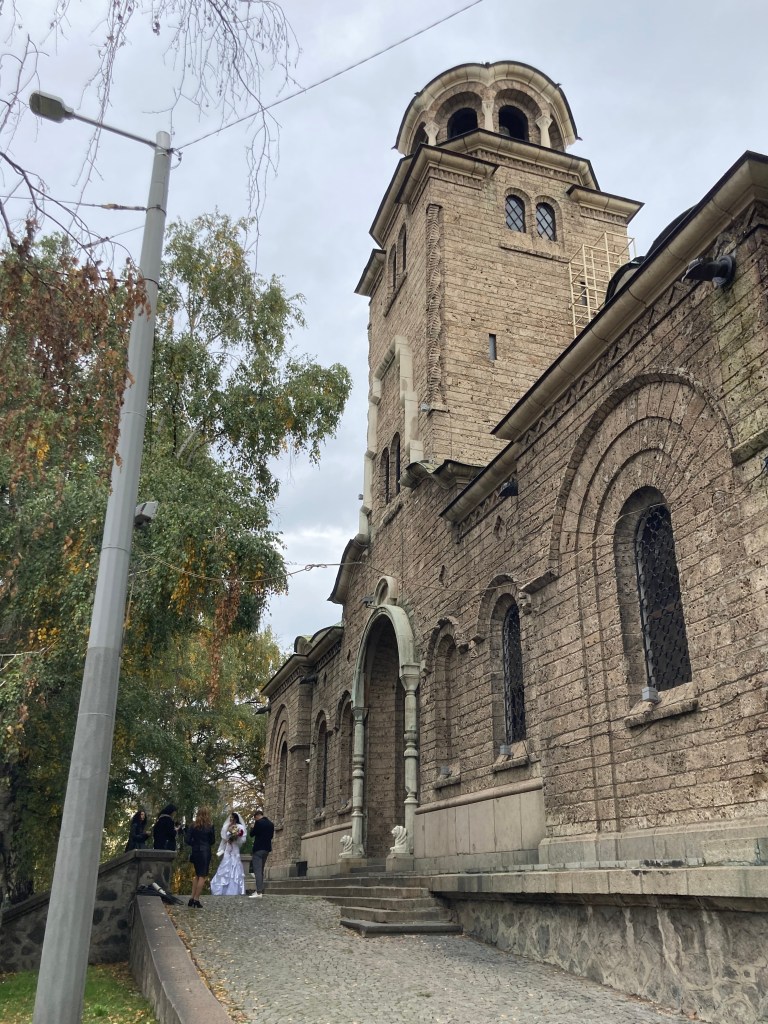
Sv. Nedelya
Bulgarian Orthodox Cathedral at the corner of Boulevard Aleksandar Stamboliyski and Boulevard Knyagina Maria Luisa
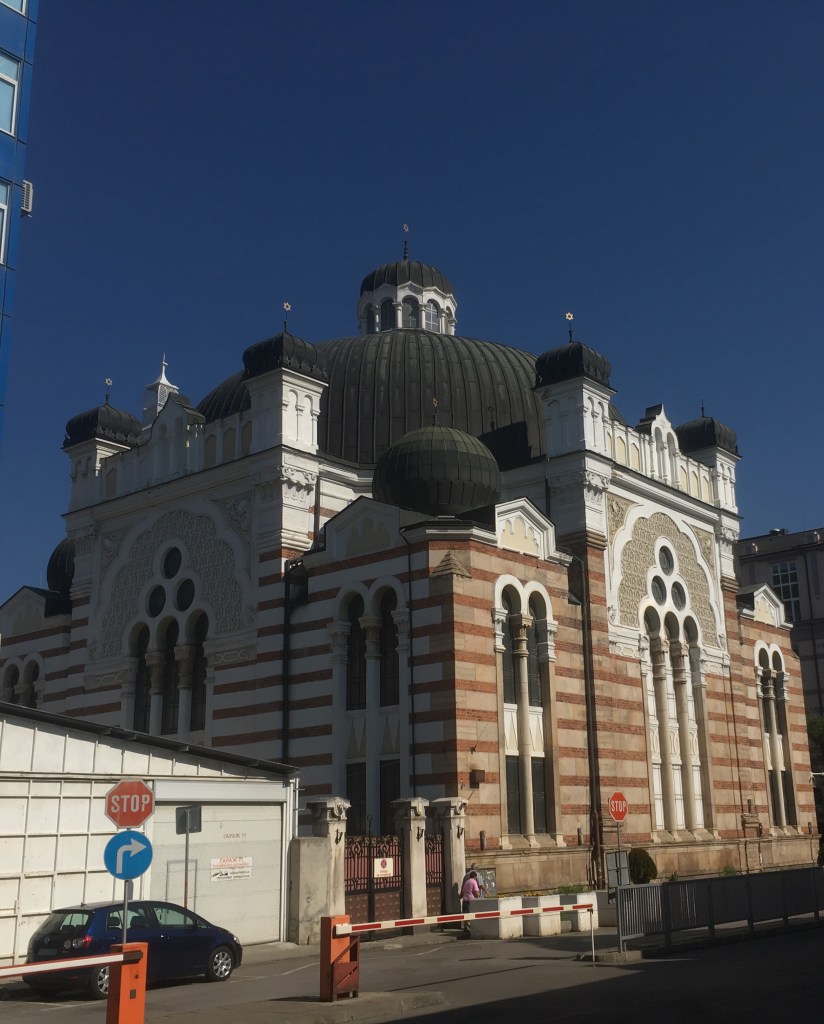
Sofia Synagogue
Sephardic Orthodox Synagogue at the corner on Ekzarh Iosif Street between George Washington Street and Knyaz Boris I Street
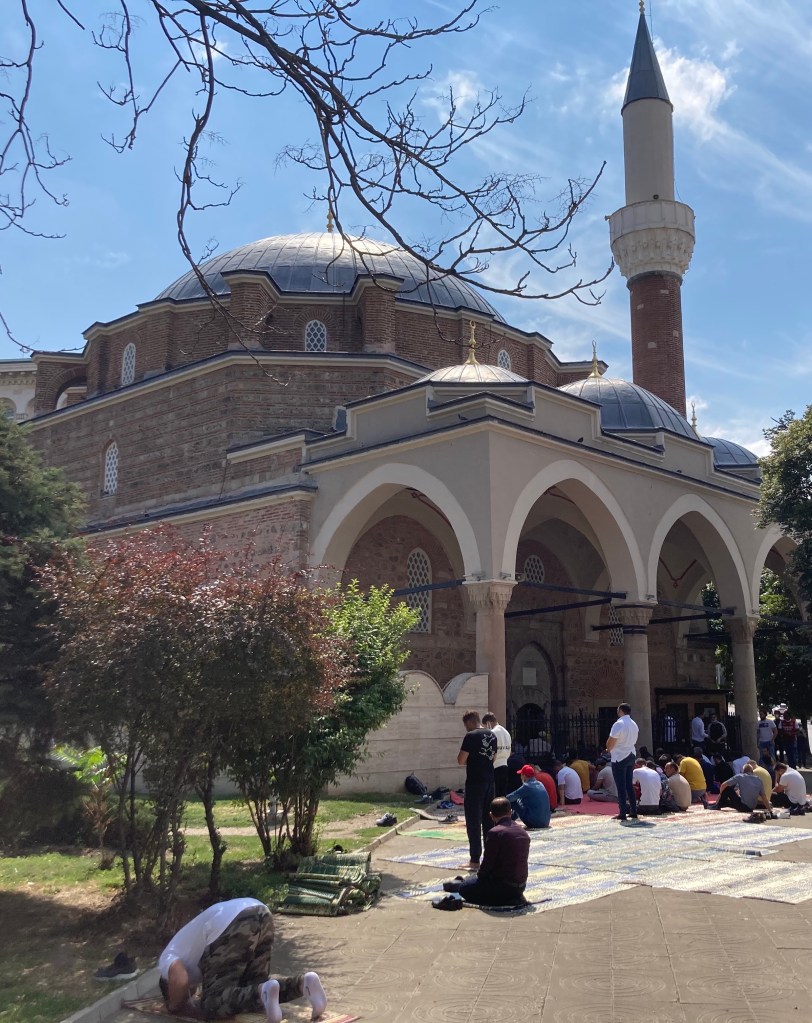
Banya Bashi Mosque
Sunnī Mosque on Boulevard Knyagina Maria Luisa near the corner with Ekzarh Iosif Street
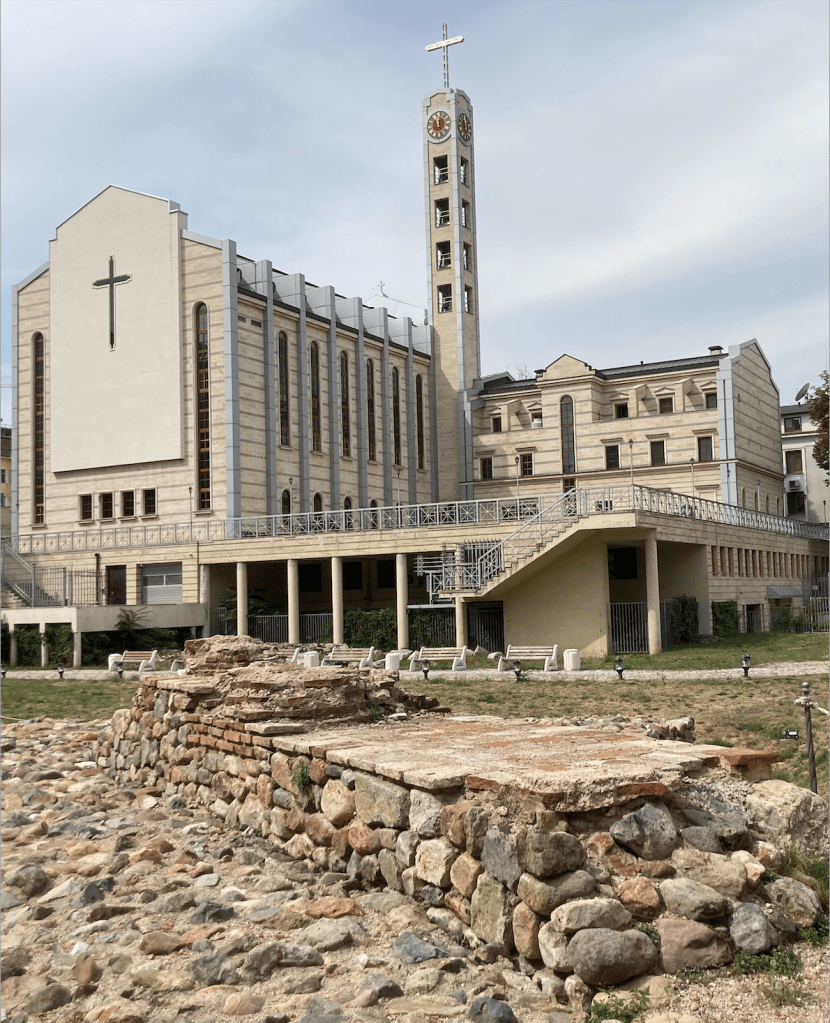
Sv. Iosif
Roman Catholic Cathedral (and site of the excavated Serdica gates) at the corner of Boulevard Todor Aleksandrov and Knyaz Boris I Street
Background: The idea of toleration (търпимост) has been associated with religious contexts in Sofia at least since 311 C.E., when Roman Emperor Galerius, who was born near the city, ceased persecuting Christians and instituted the Edict of Toleration. While the edict applied to all Serdica, as Sofia was then known, and to the empire as a whole, the center of today’s Sofia has a particularly strong claim to this legacy, as it contains the St. George Rotunda and excavated ruins around the Serdica Metro Station that date to the early years of toleration of the sights, sounds, and practices of diverse religions. The appellations “Zone” or “Square of Tolerance” (Площадът на Толерантност) that today are often applied to this part of the city center allude to the nearly rectangular shape marked by the two cathedrals, the synagogue, and the mosque. The space in between them, however, is no open square but is filled with buildings, while much of the former pedestrian space around some of them has been excavated. If one cannot stand in any one place at ground level and see all four ‘corners’ of the square, though, one can at certain times of day hear them, as the cathedral bells and the mosque’s call to prayer carry over and around buildings. Sacred sound has become an important domain for gauging the status of religious tolerance, and this website documents the traditions of music and recitation, but also of silence and silencing, between these four main religious sites and at others in the vicinity.
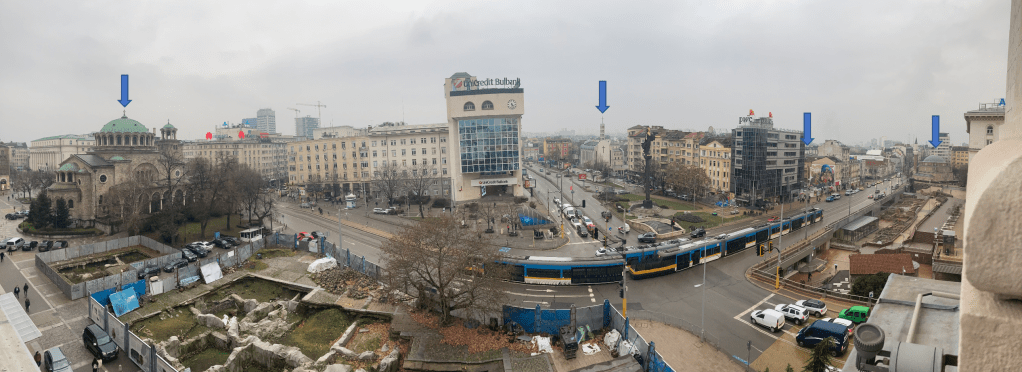
Site designed by Ian MacMillen during a Fall 2021 research semester as a Fulbright Scholar in Sofia, Bulgaria, with assistance from students in a seminar on “Music and Ritual” at New Bulgarian University. The information and opinions provided here in no way represent the Fulbright Program or New Bulgarian University.
Contact
ian.macmillen@yale.edu